Have you ever heard of Toulouse as a city centre whose improved street design is revolutionising local prosperity, benefiting from and in turn further catalysing the region’s booming economy? Probably not. It is not normally lauded as a case study. But the quality of Toulouse’s street design is staggering. The results are stunning. Walking round the city in October 2022 I could literally not find a single empty shop in the city centre. (There must be some). How have they done it? Well, it has to be admitted, they have a trick up their sleeve: the city centre’s buildings are almost uniformly beautiful, largely unscarred by war or traffic-modernism.
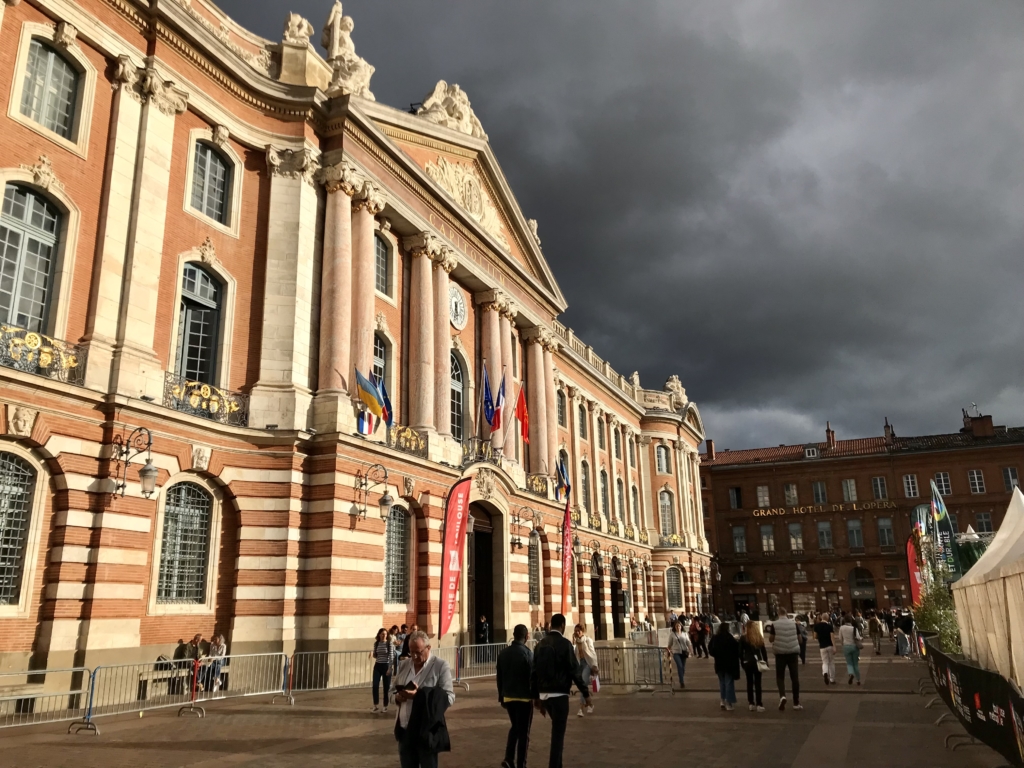
The Capitole de Toulouse (17050-60). Surely one of France’s most sumptuous city halls inside and out
Many of the city streets are built from the region’s traditional “foraine” brick which is large and flat (like a Roman brick) and comes in a lovely range of ochres, reds, pinks and oranges. You can see why the French call it “La Ville Rose.”
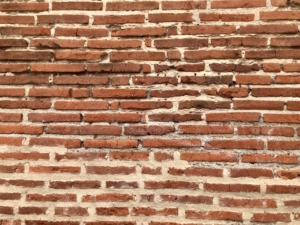
Foraine bricks in modern Toulouse
They do have some white stone historically brought down the Garonne River from the Pyrenees. They also paint some bricks. This gives a gloriously polychromatic effect.
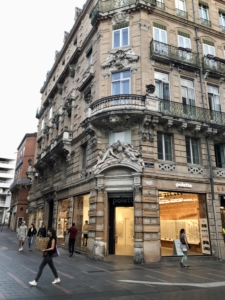
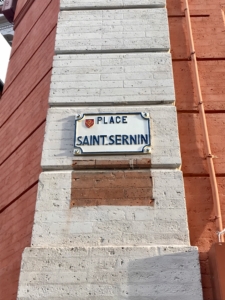
White stone and painted brick, alongside deep lime mortar creates a joyful red / white polychromy
In 2012 the city hired the Spanish architect and urban planner, Joan Busquets, to improve the city centre. What did he do? The overall strategy is one of putting people first. Cars are permitted in much (not all) of the city centre but they are second-class citizens compared to the teeming hordes on foot, bicycle or scooter. In some streets (as below) cars are contained by elegant bollards in narrow carriageways.
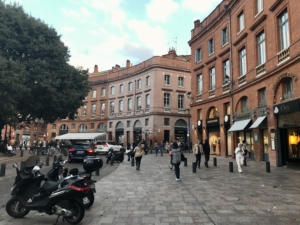
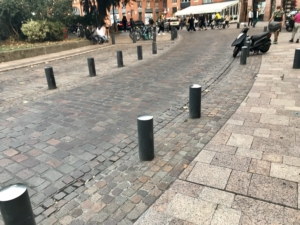
Permitting cars but as guests
This is the approach taken in most of the central streets but there are very few cars. It’s hard to drive through the town and it just easier to walk or cycle. The bollards are elegant, the pavements & carriageways are “at grade”, i.e. are the same level.
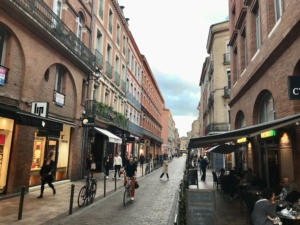
Narrow street, wide pavement.
The materials are excellent. From left to right in the photo on the left below you can see pavement, edge of carriageway and carriageway. There are no garish paint or ugly signs cluttering up the city. Details matter.
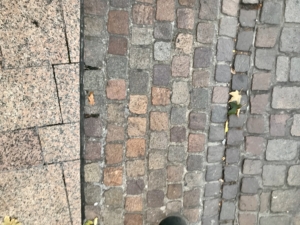
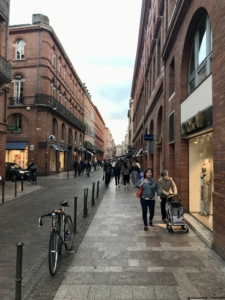
Investing in stone for all time not tarmac for tomorrow. A complex street with no need for signs.
There is a very modest 20kmph speed limit in place nearly everywhere. But, above all cars and mopeds (there are lots of mopeds) just drive carefully because they have to. Look how close the moped below is to the pram. It would give most British or American highways engineers a heart attack. However, this is in fact a very safe street because people come first.
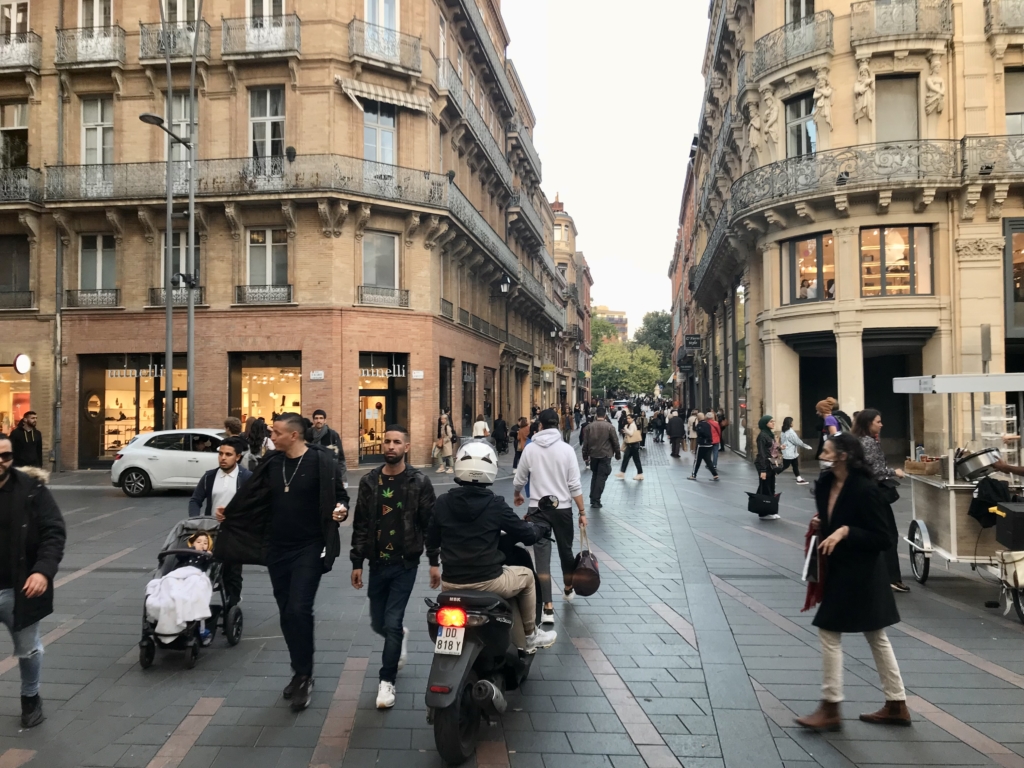
Mopeds and prams within a few feet makes for a safe street not a dangerous one
Here’s another street which does permit cars but uses design to slow them down. If you look carefully you can see a car in the distance. In front young children walk safely right beside the carriageway. They are not in danger. Nearly everything modernist town planning and highways engineers did undermines urban prosperity and quality of life.
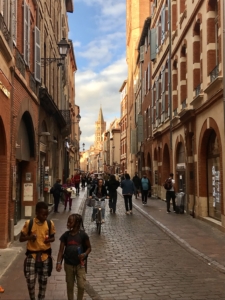
A street with cars and children
There is very little on-street city centre parking other than for disabled permit holders as below. There is parking further out and also some below ground beneath the city centre. Above all, there is no incentive or need to drive round and round ‘looking for a place.’ This is certainly not undermining shops’ vitality though.
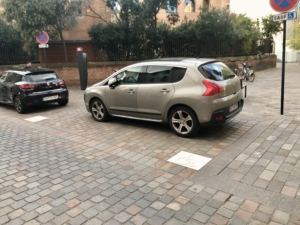
Some rare on-street parking. For disabled drivers
In contrast there are lots of places to park bikes, including the city’s hire bikes. The scheme started in 2007.
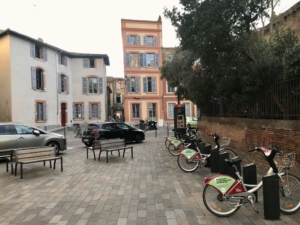
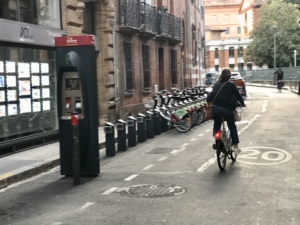
It’s easy to park your bike though
Other easy and pleasant alternatives include the city’s tramway line (opened in 2010 with some gorgeous greenways down boulevards) and the metro system created over the last 20 years with driverless, rubber-tyred trains. No risk of strikes is important in France where public officials can be assertively militant about their rights.
Did I mention the trees? Wherever the city opens up, they are planting gorgeous street trees with benches beneath. The combination of trees and those ochre bricks is magical, even against an autumnal slate sky on the day I visited. Street trees are proven to improve places, clean air and slow traffic. Here they perform their task magnificently.
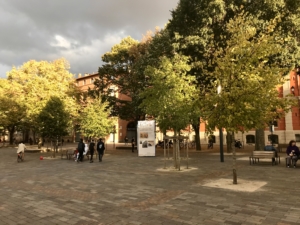
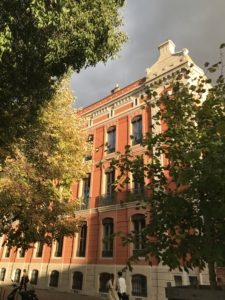
Toulouse trees. Pink and white: grey and green.
There is some so-called “filtered permeability” where cars are not permitted for at least part of the day. This is done in some town squares, between cafe tables or underneath those ubiquitous trees.
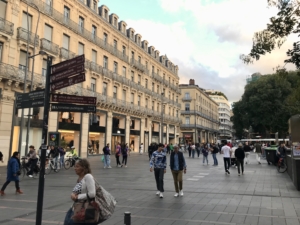
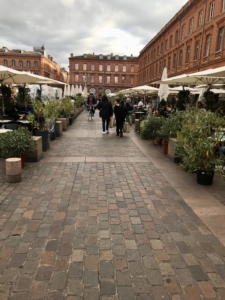
Square without cars for at least part of the day
However, everywhere the same principle is core: people come first. That’s often (very practically) expressed though continuous, sometimes called Copenhagen, crossings where the pavement continues across the carriageway of the secondary street. You can see this everywhere.
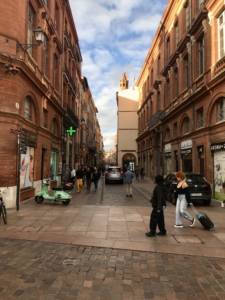
A so-called Copenhagen crossing in Toulouse
The results are glorious. City streets teeming with life, prosperity and movement, fulfilling the role that cities have played since the dawn of history as efficient places to come to buy, to sell, to work, to mart and to have fun in the process.
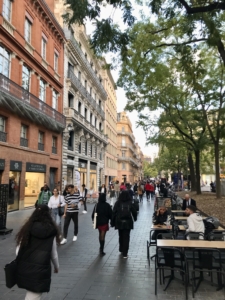

Walking, working, talking and living. The virtuous circle of place
All aspects of a place’s economic and human prosperity are inter-connected. Of course, Toulouse’s prosperity is not just due to superlative transport planning and city centre street design. But what Toulouse’s well-judged improvements have done is strengthen the local ‘economics of place’, encouraging people to wish to live and work, invest and set up companies, start children and raise families locally. Nice places attract people. People create jobs and demand. And this in turn attracts more people and more funds to improve the place. This is the virtuous circle of place which Toulouse is supporting, spinning it faster, more confidently and more joyously.
Toulouse’s streets are rich in people: by day and long, long into the evening. Busy cafes, at grade streets and full bicycle racks tell a powerful story which too many town councils in too many countries ignore.
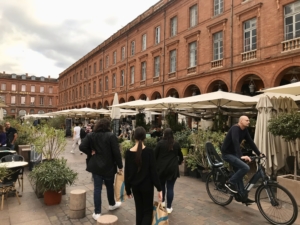
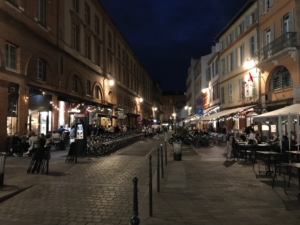
Busy by day … and by night
It is important to add that Toulouse gives back to children the liberty of movement lost over much of the last century. It is a hard thing to capture in photos, but the city’s children are constantly moving about unaccompanied on bikes, feet or scooters.
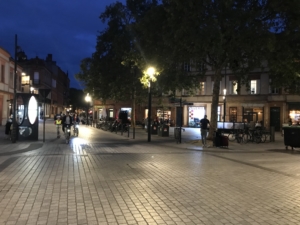
A child cycling on a city centre street. The child here is accompanied but many children seen were not
Every corner or niche that could possibly have a shop squeezed into it does. There must be some, empty shops somewhere but I did not spy a single boarded up shop front in the city centre in several hours of exploration. Global brands and chain stores are very content to comply with clearly strict local codes on acceptable design.
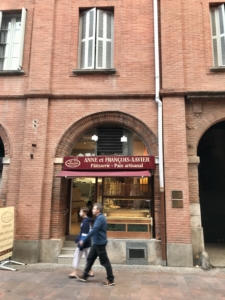
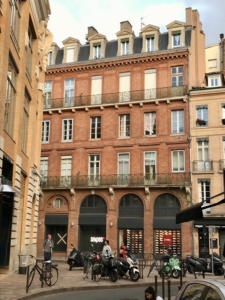
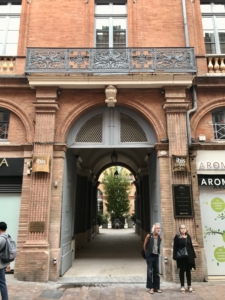
A shop in every niche or window. Pedestrians are good shoppers. Global brands follow local codes
I have not tried to check the data but the well-maintained state of upper storeys and overall buildings clearly showed that many are keen to live or work in the beautiful, busy city. There are rental incomes coursing through buildings. This is sumptuous and very gallic “Gentle Density.”
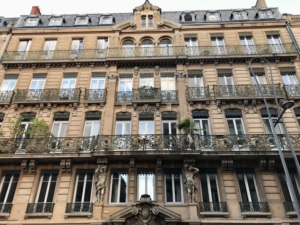
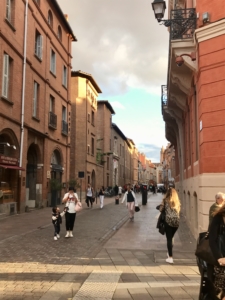
Gentle density that dignifies and does not demean
It is hard to summarise all of Toulouse’s reforms and wise decisions over the last 15 years but here is an effort.
• Do create or preserve beautiful buildings;
• Use beautiful and resilient materials which will last;
• Do put people (and bikes and scooters) first;
• Do provide copious bike hire and parking;
• Do create trams (it’s time for trams and light trains);
• Do plant street trees;
• Limit car parking;
• Prevent cars zooming through (the city is not a motorway); and
• Ban garish paint and signs.
Underpinning these proximities are interwoven concepts of beauty, of respect for the precious and particular, the 15 minute city and urban re-greening. Some ideas might seem “left wing.” Some might see “right wing.” But who cares? The evidence of their benefits for human prosperity and sustainable living is clear and brought into radiant perspective by La Ville Rose. The renaissance of Toulouse’s streets over the last generation point the way to a form of living which is happier and better-connected, one in which we can breathe cleaner air, know more of our neighbours, permit our children to dare to wander more freely and in which we can all tread more lightly upon the planet. That seems worth doing.
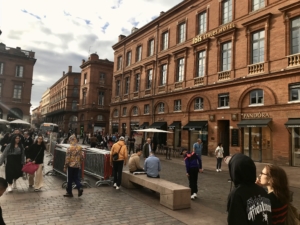
La Ville Rose
Nicholas Boys Smith is the founding director of Create Streets

